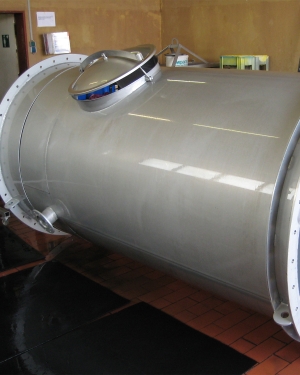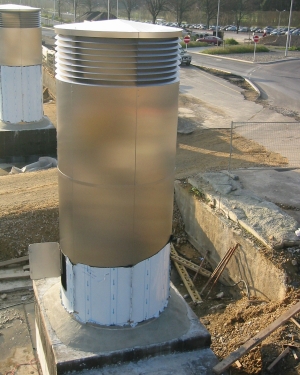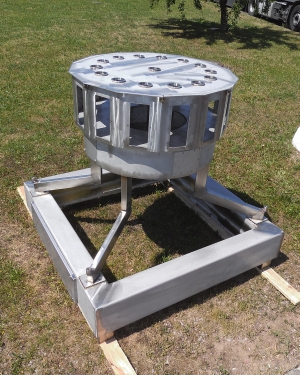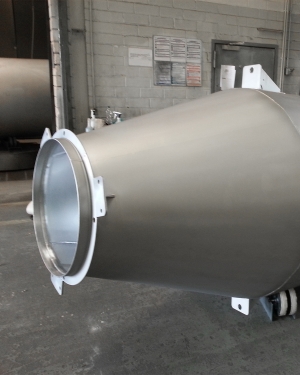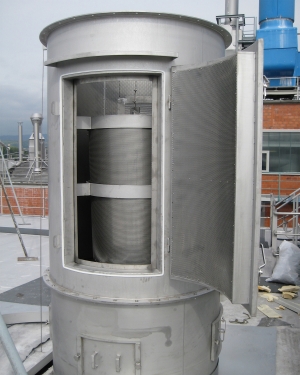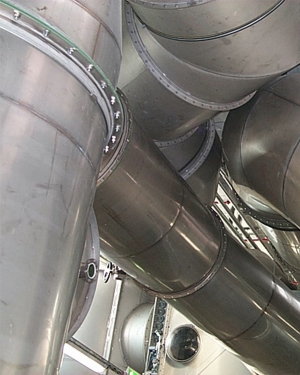Discolorations occur during welding due to oxidation. During operation these tempering colours would quickly lead to rust perforations and must, therefore, be thoroughly and completely removed. Pickling is the most reliable solution for this and is more dependable and cost efficient compared to brushing, grinding or blasting. In our LBF-pickling facility, both full immersion pickling and spray pickling are available. LBF full-surface pickles all stainless steel components – interiors and exteriors.
Ground surfaces are an element of the design; matt blasted surfaces are a further possibility. Typical grit finishes for ground sheet metal are 120 grit, 180 grit and 240 grit. Ideally, the structures are designed with few or no weld seams, as they would interrupt the grinding pattern. Weld seams and rough sheet metal surfaces must be ground for hygienic reasons particularly in food and beverage technologies, usually using roughness values of Ra < 1,6 µm or Ra < 0,8µm.
Stainless steel custom design – weighing equipment – as per customer drawing. Very strict hygiene requirements apply in the food industry. These must be kept in mind when designing the construction, especially in regards to cleanability and disinfecting capabilities. An even and smooth surface must be achieved; sometimes a maximum roughness is defined. Inaccessible cavities and pores in the weld seam are absolutely not permitted. Pickled surfaces free of grease and completely sealed packaging round out this offer.
For the storage and mixing of bulk goods in the food industry, silos are usually designed with a conical outlet for an optimal handling of the goods. Cold-rolled steel is used for materials that come in contact with the media; if required corresponding material certificates are available. During fabrication, close attention must be paid to a gap-free welding and interior weld seams must be ground flush with the sheet metal (Ra<0,8 μm). The final surface is treated with ceramic or glass bead blasting.
The interior components of silencers in the food industry must be accessible or removable to facilitate inspections, cleaning and disinfecting, or replacements. Absorbent surfaces can be fitted with foil so they can be vacuumed and wiped down. Careful cleaning with a steam cleaner is possible on stainless steel meshes. For smaller quantities of air, a round construction is usually technically and commercially the most economic design.
DUCoaT – coated ducts – our Halar-duct is used to handle a wide range of corrosive exhaust streams when even stainless steel won’t suffice. It can be used in microchip, solar, wastewater, laboratory and electroplating technologies. In each of these industries, chemical processes take place in which reactive substances are used. Consequently, an INTERIOR COATING system is needed – DUCoaT!



